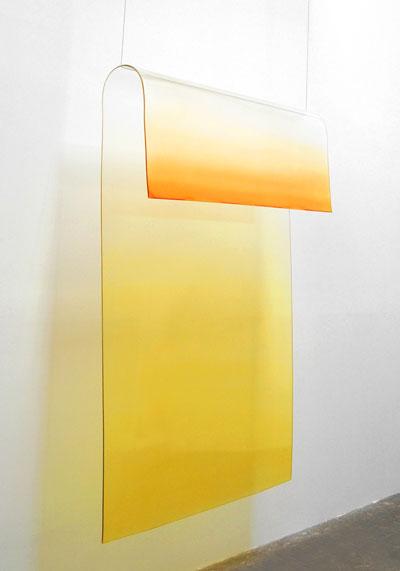This weekend LACMA added eight new works to its collection through its annual Collectors Committee events. All week on Unframed our curators will be highlighting the objects just acquired.
One of the original Ferus Gallery artists who helped put Los Angeles on the art world map—the one who, according to fellow Ferus artist Billy Al Bengston, “showed us the way”—Craig Kauffman is best known for the sensuously painted-plastic hybrids between painting and sculpture that he made in the late 1960s and early 1970s. Associated with both the Southern California Light and Space and Finish Fetish movements, Kauffman—like many of his SoCal contemporaries—to a great degree faded from public view in the 1980s and 1990s. Only with the rise of Los Angeles as one of the major centers of contemporary artistic production in the 1990s and early 2000s has significant attention been directed once again to an earlier generation of L.A. artists, including Kauffman.

Craig Kauffman, Untitled, 1969, gift of the 2011 Collectors Committee, photo by Vicki Phung Smith, courtesy of the Estate of Craig Kauffman and the Frank Lloyd Gallery
The works in Kauffman’s loop series (ten total, each a different color or combination of two colors) function as both painting and sculpture and seem to hover in space, suspended as they are out from the wall. His use of industrial materials and fabrication techniques for the bent and lacquered plastic of Untitled, combined with his traditional painterly use of color, allowed Kauffman to achieve what noted art historian and critic Barbara Rose has called “a kind of abstract eroticism that is purely visual.” Most of Kauffman’s loops have either been hidden in collections for decades or were kept by the artist, so the series has remained fairly unknown and unseen until recently.
Kauffman’s use of plastic as a sculptural medium was informed not only by technological advances developed by the local aerospace industry in the 1950s and 1960s but also by his knowledge of modern masters such as Laszlo Moholy-Nagy and Naum Gabo, pioneers in the use of an earlier generation of plastics for their sculptures. Similarly, Kauffman’s interest in rich and sensual colors came out of his lifelong love of Henri Matisse who, Kauffman once said, “has always been my favorite painter.” The transparency of the loops may owe to Kauffman’s having seen Marcel Duchamp’s signature Large Glass in the French artist’s seminal 1963 retrospective at the Pasadena Art Museum.
Kauffman—and his loops in particular—will be included in two major upcoming shows this fall (at the Getty and the Museum of Contemporary Art, San Diego) both part of Pacific Standard Time, the Getty-sponsored exhibitions initiative throughout Southern California, highlighting the significance of art in Los Angeles in the postwar decades. Our new acquisition is also planned to go on view at LACMA this fall.
Carol S. Eliel, Curator, Modern Art



